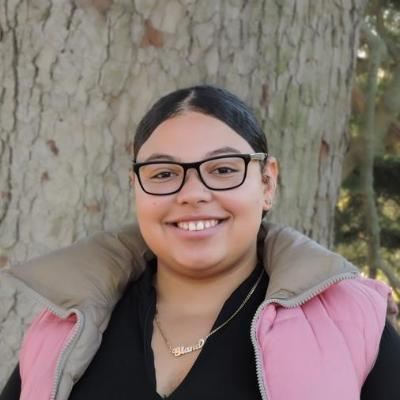
Giana De La Cruz ’24
Specialized Resources


Giana De La Cruz ’24

Margaret Benson ’23

Miya Preyer ’23
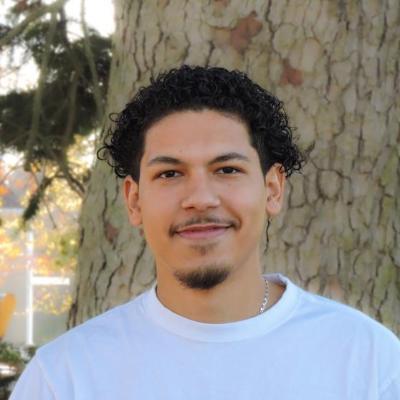
Sebastian Arango Chiquillo ’23
Interview with Grace Flautherly ’23

Miya Preyer ’23

Samirah Jaigirdar '22
Reflecting on my work with the Office of Communications

Samirah Jaigirdar '22
Documenting my last Camel Day as a senior
Daniel Taekmin Nam '19 is an international student from South Korea. He is majoring in Economics and minoring in Applied Statistics. He is a member of the Connecticut College Football Club (CCFC), and the Pegotty Investment Club. He is currently in the middle of a two-year leave from Conn to serve in the Korean Army.
Over the summer, I was granted an exciting opportunity to conduct research on health care economics with Assistant Professor of Economics Mark Stelzner. I was able to pursue my academic interests out of the classroom thanks to the Funded Internship Program our college offers for juniors through the Office of Career and Professional Development.
Continue Reading
This semester, I’m taking a Sophomore Research Seminar called “Secrecy: Power Privilege and the Invisible,” taught by Lucy C. McDannel ‘22, Professor of Art History and Anthropology and Director of Museum Studies Christopher Steiner. The Sophomore Research Seminars are a set of classes at Conn designed to let students get a head start at doing in-depth research by giving us demanding inquisitive assignments and culminating in a 15-page original research paper.
My seminar is an interesting interdisciplinary look into the many different topics and perceptions surrounding secrecy; some topics we’ve covered include secret societies, magic, and surveillance. Recently, we had the exciting opportunity to curate a small exhibit in the display cases outside the Linda Lear Center for Special Collections and Archives titled “Photography, Trickery, and the Invisible.” The exhibit focused on three types of photographs common in the late 19th and early 20th centuries: hidden mother, spirit, and trick photography. Most of us had never curated an exhibit before, so it was a new and fun experience for the class.
Continue Reading
At the recent Mellon Undergraduate Research Symposium, I celebrated a milestone of a year-long process. In front of faculty, staff and fellow students, I gave a presentation driven equally by academic pursuits and personal passion. The process behind the research I presented was one of the most valuable experiences I have gained at Conn thus far.
The Mellon Undergraduate Research Program encourages and sponsors students to pursue research in the arts and humanities. This program enables the existence of sophomore seminars that are centered on this kind of research. In Professor David Jaffe’s “Art of Protest: Occupy ____” sophomore seminar, I learned about how art and protests have historically merged to bring about change. Simultaneously, I explored the impact of contemporary protests through current events and studied the ever-changing definition of what qualifies as protest. “Carry That Weight,” a performance art piece by Columbia University student Emma Sulkowicz, inspired my final project for the class. Emma used art as a medium to protest her alleged rape. I was struck by how this piece allowed Emma to take ownership of her survival, and enabled people to become involved in fighting against sexual assault. I wanted to explore this idea further, so at the end of the semester I took the opportunity to apply for a Mellon grant to support my research. I was lucky enough to be awarded the grant that winter.
Continue Reading
Pursuing an honors thesis simultaneously thrills and terrifies me. The English Department requires students who choose to conduct a thesis to develop an idea for a study, submit a proposal for review by the department, write at least 50 pages on the topic, and present on the topic at the end of the year for the campus community. Although the College does not require all seniors to conduct honors theses, I decided to do one in order to delve into a topic of particular interest to me.
Continue ReadingIt was fourth grade. We stood in the cafeteria line. “Girls can’t crack their knuckles,” proclaimed one of the boys. My yet-to-be-defined feminist senses were tingling. I responded, “I can crack my knuckles!” So I did, and I kept cracking my knuckles. I thought it was cool. Over time, cracking my knuckles turned into cracking lots of other areas of my body.
This semester, I’ve been taking a cognitive-behavioral therapy course. Our semester-long project is to correct a maladaptive habit, so my first thought was to try to work on my knuckle-cracking. The habit itself doesn’t really bother me, except for its occasional inconvenience. What bothers me more is that the habit tends to bother other people. I’ll crack something and gross out my company.
Continue Reading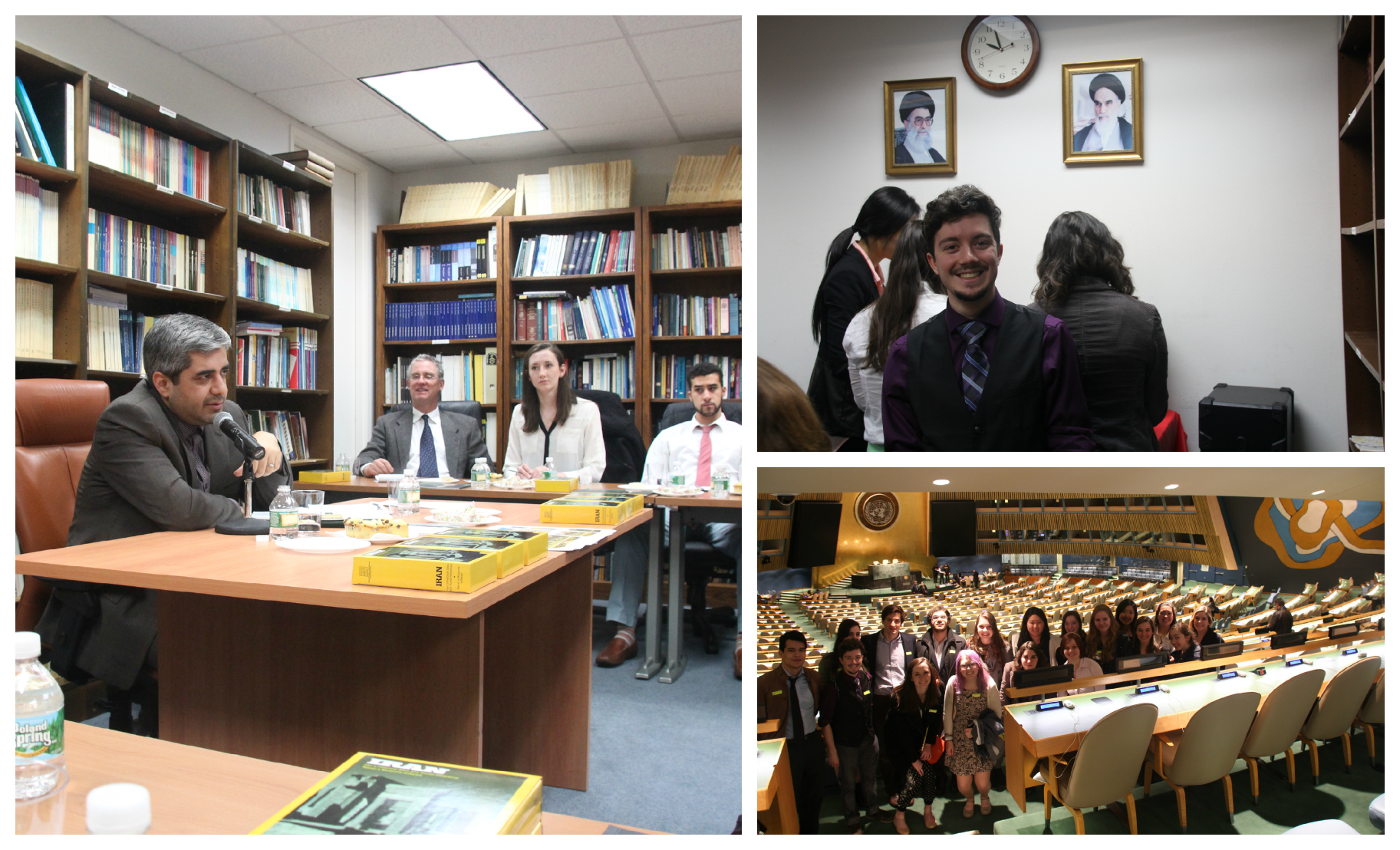
New London seems as if it might be in the middle of nowhere. It's easy to forget, however, that we’re actually quite close to major New England cities; we’re less than an hour to Providence, two hours to Boston and two and a half to New York City. All of these places make for great day trips, as well as cool opportunities for class field trips. Most recently, Mike and I headed to the United Nations with our CISLA class where we met with the delegations from France and Iran.
The delegations are inconspicuously housed across the city. As we entered what appeared to be an ordinary office building, I found myself temporarily confused — where were we heading? Forty-two floors up, I found myself at the New York home of the Iranian delegation, a simplistic office with white walls featuring photos of Ayatollahs Ruhollah Khomeini and Ali Kahmenei, the Supreme Leaders of Iran. Ushered into the library, a representative from the delegation gave us a brief introduction to Iran’s history and current foreign policy. The gist: Iran is not perfect, but they’re working on it. “We are the most stable country in the Middle East,” the delegate told us. Our course instructors encouraged us to respectfully ask difficult questions, and we found ourselves inquiring about the right to organize within Iran, the Houthi movement in Yemen and the implications of the nuclear deal with the United States. It was interesting to hear how his responses aligned with the official view of the Iranian government. It was a contrast to the French delegation, whose delegate met with us in the “parlor,” an ornate ballroom with tapestries, hardwood floors and a chandelier. He answered with his personal perspectives about social tensions, the Charlie Hebdo shooting and the potential use of secularism as a guise for the social exclusion of Islam.
Continue Reading
We got to hit the casinos for class! Well, it’s not what you’re thinking — there was no gambling, drinking or seeing shows. As part of a trip for Professor Joyce Bennet's "Anthropology of Tourism" course, however, we did get to tour Mohegan Sun's various gaming rooms, paying particular attention to aspects of Native American culture and the way these details are utilized for aesthetic purposes. Mohegan Sun is located just fifteen minutes from campus. While I’d been to Mohegan Sun before to see Penn & Teller, getting to study the space with an academic lens was an entirely new and fascinating experience for me. The way the lights, sounds and “natural” looking decor lure gamers into a welcoming environment is incredible to study from a bystander perspective. Diligently taking notes and snapping photographs, I felt like a true anthropologist documenting the workings of a unique culture. I’ll always remember how much academic discovery can be found in a space I previously thought was just for fun and games.
Continue Reading
There are lots of class projects in college: papers are due, lab reports must be handed it, dioramas carefully constructed. These assignments are usually an exciting opportunity to apply what you’ve learned in class and show a professor how you really feel about a topic. Recently, I put together an intriguing project I’m sure you’ll all be interested in: I converted Dorothy’s Kansas farmhouse into a house museum for the 21st century.
Now, of course I didn’t actually have the house that flew to Oz in L. Frank Baum’s "The Wonderful Wizard of Oz," but I was tasked with stepping into the shoes of a director of a museum who has just received a gift of the actual house that went to Oz. What I came up was a house museum/ tourist trap.
These are the creative and unusual projects that Museum Studies students like myself get to be involved in. We get to be very creative and imaginative, but the lessons we learn are very applicable to the field.
As guests arrive at my museum, they are brought into a state-of-the-art visitor’s center, which set back from the actual property Dorothy’s house is located on. Here, they can get a bite to eat, rent a tablet for the day, or watch a 35-minute film introducing them to L. Frank Baum’s work. Then, they make their way via horse-drawn wagon to the property where they can check out the exhibits in Dorothy’s house and then buy artisan crafts in the barn nearby. With period activities for kids, in-depth information for parents, and something unique for every guest, my museum appeals to a broad range of visitor types.
Inside Dorothy’s house is where the real fun begins. At "Dorothy’s Museum of America and the West," we ignore the existence of any movies. Instead, we rely only on L. Frank Baum’s series on Oz. In-fact, we use "The Wonderful Wizard of Oz" as a frame to look back on American life in the late 19th and early 20th centuries. For example, the squeaky Tin Man represents the big industry of the northeast. He runs on oil (as many of those companies did) and is searching for a heart (many companies were criticized for not having any heart for their workers). Another example is the Wicked Witch of the West who can be killed with a splash of water. Imagine she represents the western United States, bringing bad fortune to farmers: when water is thrown on her, all the drought she caused goes away.
The museum also looks at how women are represented in the book. The main character is Dorothy, of course, and she does not need help from anyone! She is a good learner in a world where there are few female mentors and in which she must push through a male-dominated culture. She helps three lost souls and defeats a smoke-and-mirrors wizard to bring the reign of the kingdom back under the rightful rule of Princess Ozma. Think of Dorothy as the American Alice from "Alice in Wonderland." Dorothy has no father figures to reconcile with and no prince who rescues her. Instead, she goes out and strikes her own fortune.
Doing the research for my project reminded me of what a fantastic series L. Frank Baum put together. There are so many parts of his work that connect back to the United States and the values that we have put in place. It highlights the good in our society and challenges the bad. I want "Dorothy’s Museum of America and the West" to really exist so that everyone can learn about Dorothy and her adventures and how they reflect American culture.
Continue Reading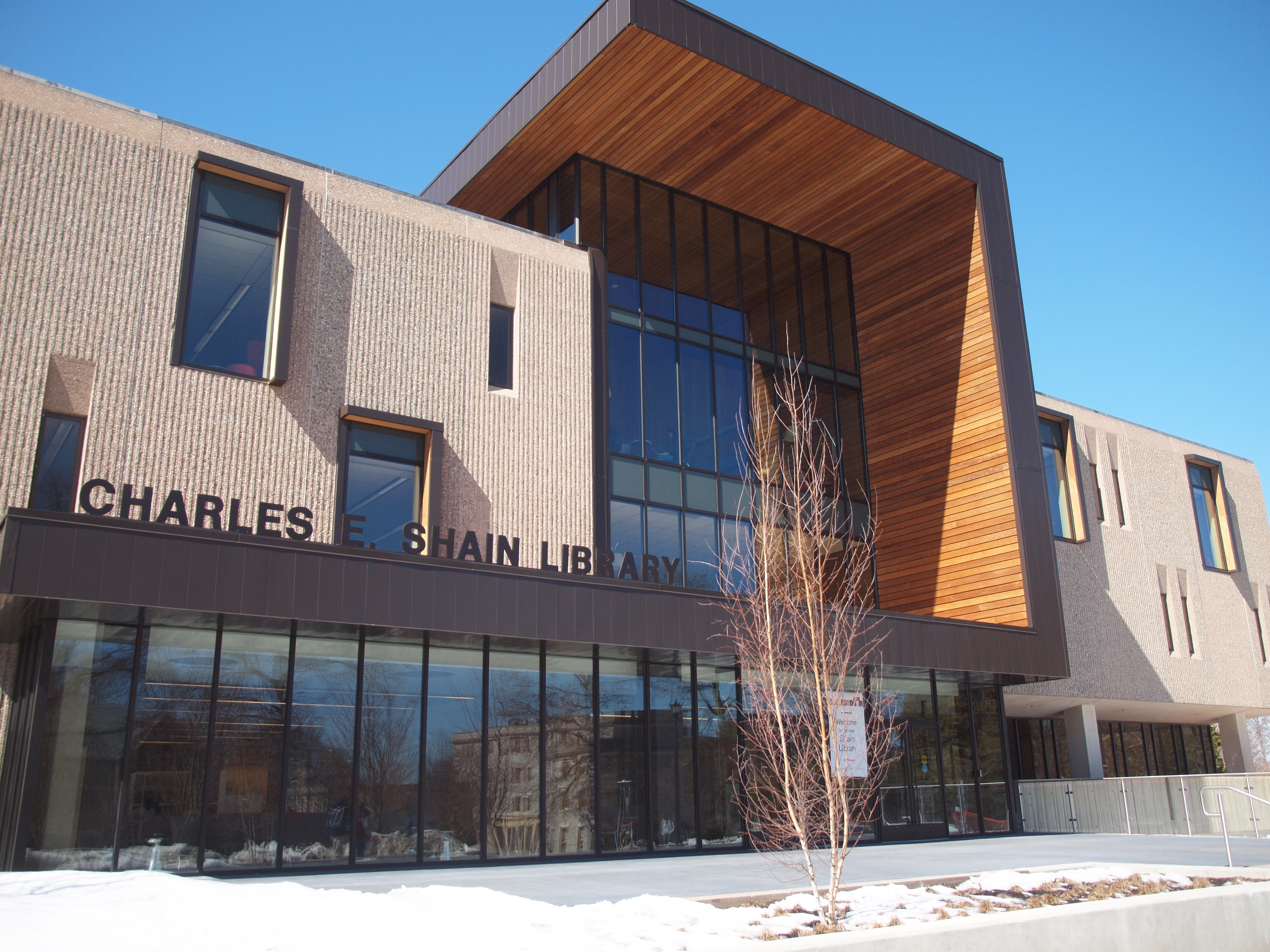
My old go-to study spot is back, and it’s all shiny and new.
“No Pain, No Shain,” was the slogan we heard all year during our library’s renovations, and while there were certain times when I truly, dearly missed the library, the $9 million dollar project was completed five months ahead of schedule and we now have a spiffy new study space for the last two months of school. The interior was best described to me by one student as “how the future was imagined in the '70s.” It’s true; there is an interesting balance between modern and retro design. Given the original '70s architecture of the building, I think it works. There are a number of new study spaces on all four floors. Every nook and cranny is filled with new comfy chairs and desks, a nice touch considering how packed the library becomes during midterms and finals.
What I’m most excited about is the light. There’s so much of it! Old Shain, with its tiny windows, was dark. New Shain, on the other hand, has much larger windows, making for much happier studying as the light pours in and brightens up the space.
Continue Reading
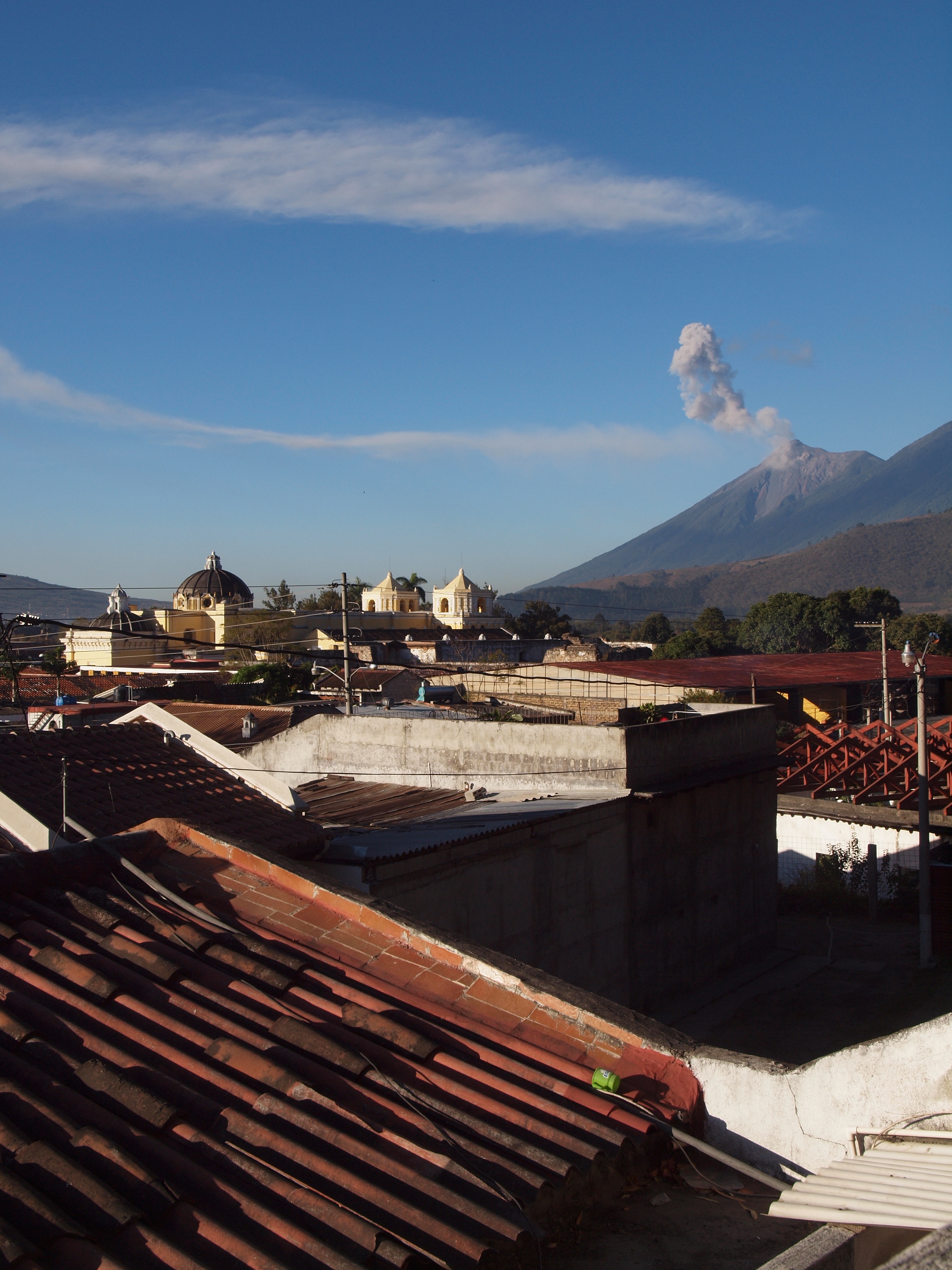
One of the great things about college — besides the interesting classes, independence, etc. — is the time off. It's the epitome of the "work hard, play hard" saying. After short periods of intensive study, there are so many ways to spend our month off in winter and three months off in the summer, from internships to traveling. For me, I received the good news that I was accepted into Connecticut College’s Toor Cummings Center for International Studies and the Liberal Arts, or CISLA. The goal of this center is to internationalize one’s major. Mine being history, my research proposal involves studying art that was produced under the strict censorship policies of Franco’s dictatorship in Spain, exploring topics such as propaganda as art and “cultural wastelands.” So next year, I will be studying and interning abroad in Spain. This means, however, that I have to get my Spanish in gear. My favorite part of the program is its emphasis on language learning, which inspired my recent trip to Guatemala.
Not having spoken Spanish in about a year, it's safe to say my language skills were pretty rusty. So for winter break, I headed off to Don Pedro de Alvarado language school in Antigua, Guatemala. Trying to play catch up, I studied for six hours a day with two different tutors. Contrary to what you might think, the time flew by, especially since the emphasis of my one-on-one tutoring was conversational skills. Every day, I simply spoke with my teachers about my life, their lives, and everything else in between. By the end, I can safely say they became more than just my teachers, they became my friends. They would take me around the city and show me cool art galleries, restaurants and church ruins. My afternoon teacher, Lidia, and I even took a day trip to El Lago de Atitlan. A three-hour trip on Guatemala’s famous “chicken buses,” the day was certainly an experience, from riding on a boat across a beautiful lake to having the man who was sitting next to me on the bus try to baptize me.

During my time in Antigua, I was staying with la familia Darce Pineda, my host family. I was one of five students staying with the family. The atmosphere was so warm that all of us were truly welcomed into the family — from attending their 3-year-old son Renecito’s birthday party to supporting them at their gigs (they are a family of musicians). The picture at the top left of this post is the view from their house’s terrace. In the background, el Volcan de Fuego (the volcano of fire) is erupting. Not to worry — it wasn’t a major eruption, but it is highly active and spurts smoke and ash on a daily basis. Pretty cool, huh? The second photo is of me and some fellow students at the top of Pecaya, another nearby active volcano we climbed one Saturday. While Pecaya is also not majorly active, we did get to roast marshmallows over lava. Yes, I know it sounds a little far-fetched, but really it did happen. It was also probably the best smore ever. While the lava has cooled and hardened, there are cracks that run though it, exposing hot coals exactly the same as what we would see in a dying fire, making for the perfect place to roast a marshmallow.
If I were to ever give advice to a college student, it would be to take advantage of all the time off. It gives us a freedom to study, travel and explore in a way that a full-time job does not. I got to connect my studies at school with an incredible culture opportunity. My Spanish improved greatly, I can happily say I feel more prepared for CISLA, and I got to have some cool adventures along the way.
Continue Reading
With final exams only a few days away, Conn students are busy scouring research materials for projects and papers. (It will be open when we return from Spring Break!), so we aren't able to browse the stacks like usual, but all the library's books and resources are still available. I went behind-the-scenes and into the construction zone with library staff to see how our book requests move from Shain to the temporary circulation desk each night.
Continue Reading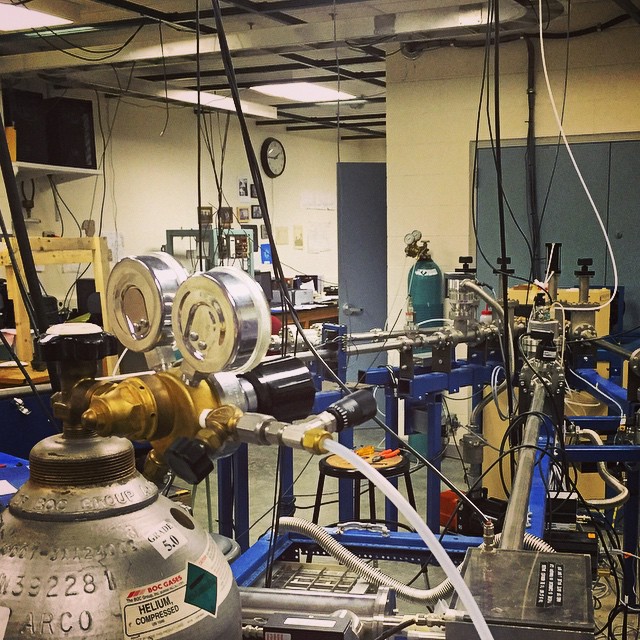
The College's Physics Department is home to one of the largest telescopes in New England, a state-of-the-art wave fume and a one million-volt particle (ion) accelerator. It's one of just four at undergraduate schools in the United States. We have many science resources at Conn, but the accelerator is the one thing that most are unaware of.
Students who study physics, geophysics and chemistry, however, know the particle accelerator well. The machine is currently processing a program called PIXIE. It analyzes the chemical composition of objects without having to use traditional chemistry techniques that could damage or destroy artifacts. By firing a beam of protons at an object, the resulting X-rays are analyzed to decipher the exact chemical composition of an object.
At Conn, PIXIE is helping professors and students study historical Native American trade routes from the New London region. By analyzing the chemical composition of historic clay pots discovered nearby, my classmates have been able to track where these clay pots were made by comparing them to mud samples. On Mamacoke Island, part of the College campus, classmates have uncovered large collections of clay pots, preserved by time. Of the many that originated on the island, some were found to have originated in Hartford and Long Island. By using PIXIE, we have found concrete evidence of intertribal trade between Native Americans in Connecticut. So far, more than two research papers have been published in scientific journals as a result of PIXIE, both written by undergraduate science students at Conn.
Continue Reading
Recently, professors, community activists and service members from our neighbors at the U.S. Coast Guard Academy recently met with Conn students to discuss a wide range of topics related to immigration in the United States. After giving a brief description of their role in the issue, the panelists met with students to hear their perspectives on immigration in a more casual environment, fostering dialogue and sharing of ideas. I spoke with Dr. Evan Haglund of the Coast Guard Academy. Working as a consular officer at the American Embassy in Ghana, Dr. Haglund was able to offer a unique perspective on being on the front lines of the immigration process into the United States. It was a great experience to have roundtable discussions with people holding such varied backgrounds and experiences with immigration.
Continue Reading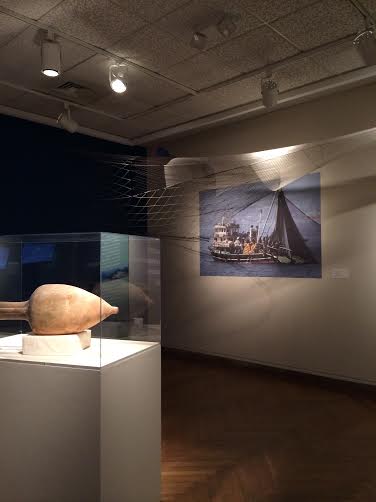
Last Wednesday, I was given the opportunity to visit "Lost At Sea: Shipwrecks of the Ancient World," an exhibit presented through the Classics Department. The exhibit is currently up at the Lyman Allyn, an art museum next to campus that the school works closely with. The exhibit consists of amazing, ancient artifacts that until recently remained, well, lost at sea. Also featured are some of the nifty-looking tools used to find artifacts, as well as some short videos about artifact-hunting.
The exhibit room that interested me the most, though, was a room full of live feeds from the Nautilus, a ship currently exploring undiscovered U.S territories in the Caribbean and Pacific. In front of the room, there is an iPad where you can type a question to a scientist on board the Nautilus and get a live response.
After a guided tour of the exhibit, I attended a talk by Dr. Robert Ballard, who led the team that discovered the Titanic. All of the artifacts in the exhibit were discovered by Dr. Ballard, who has a strong connection to the local community and the College. At the talk, he told us about how his fascination with the ocean began, how he fell into his career and, of course, how he found the Titanic. Dr. Ballard was an excellent speaker, and his exhibit was very interesting. I'm glad that I was offered the opportunity to attend.
Continue Reading
At the beginning of our French class, Professeur Austin excitedly rushed into the room and told us to follow him to the library.
This semester, in my “Historicizing France” class, we are learning about l’age des lumières, the Enlightenment. We have read the works of great philosophers, such as Jean-Jacques Rousseau, and we’ve studied the encyclopedia that first published the ideas of Rousseau and others. Even though 18th century France was as equally knowledgeable as England, they did not develop to the same economic level. French thinkers were too wrapped up in the encyclopedia to actually apply those ideas for economic gain.
Looking at online versions of Diderot and d’Alembert’s Encyclopédie, I could only imagine the effect the text had in France. I did not have to imagine for long.
As our professor guided us to Shain Library, we climbed the stairs and entered the Archives and Special Collections. We came face to face with original the original French encyclopedias.
Every student in the class was handed a volume of the encyclopedia and we flipped through its pages. Geography, mathematical proofs, Greek mythology, drawings of surgical practices and carpentry jumped out at us. After looking at the encyclopedia myself, I now can’t blame France for being content to merely gaze upon the text. The encyclopedia itself is that enlightening. Even 250 years later.
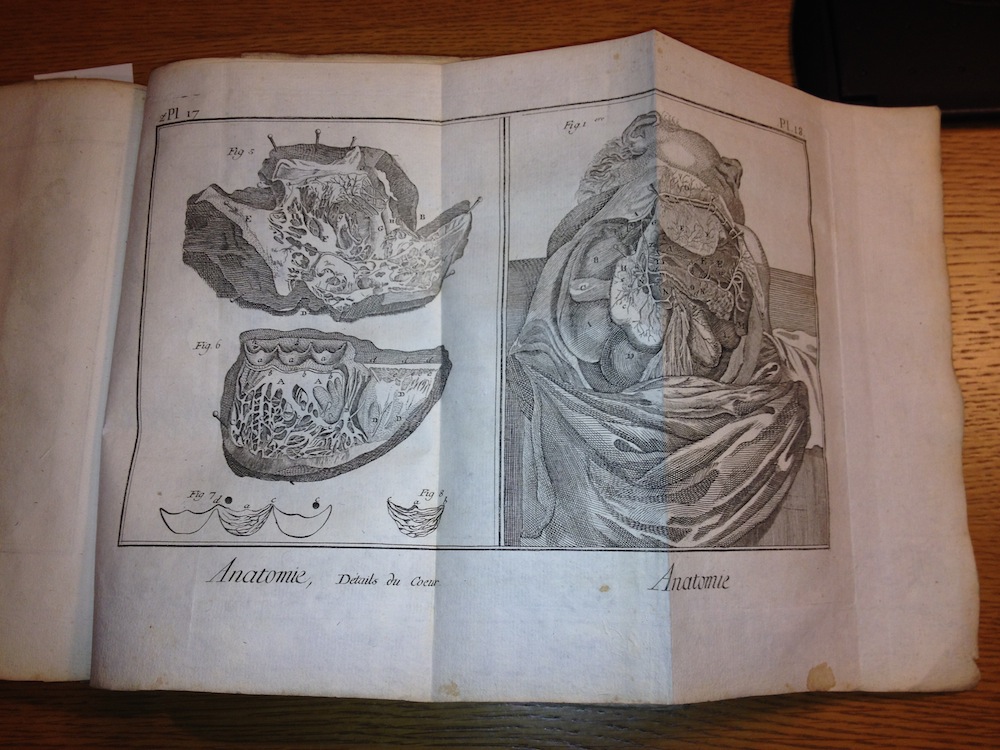
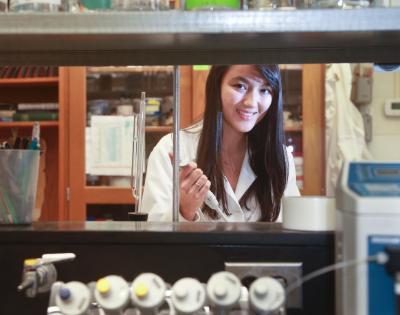
Occasionally, The ConnCollegeLive Experience will invite guests to blog about their experiences as a Camel. The following is the first in this guest blogger series.
I’ve been a tutor at Conn for the past three years. I work with students in the Science Leaders program in one-on-one and group sessions in chemistry, organic chemistry and biology. The tutoring program was started as a way to ensure our Science Leaders excel, but after last summer, I saw it also as an opportunity to experiment with new teaching techniques.
Traditionally, our group tutoring sessions work this way: Students arrive with their problem sets complete and ask the tutor any questions they have. Faculty and students approve of this type of setup because students can try the problems on their own, and anyone who needs extra help attends the tutoring sessions.
Unfortunately, the system never seemed to work out this way. Many times, students come to sessions without the problem set complete, either because they couldn’t find the time, or worse, they became irreversibly stuck at some point in the assignment.
This summer, while I was applying to medical schools, I found that most incorporate problem-based learning (PBL) into their curriculum. I sat in on a PBL class for biochemistry at the Perelman School of Medicine at the University of Pennsylvania, and it was incredible. Students worked together on complex problems in teams of five, always making sure everyone was on pace and fully understood the question at hand. The strangest thing was, they seemed to actually enjoy it.
So I gathered up our Science Leaders in organic chemistry, and I tried it. This year, rather than stringing together a number of chapter-related problems each week, we started designing problems that pull from multiple chapters and allow the students to make connections between what they are currently working on and older material.
These new sessions foster collaboration between students and teach them that even in organic chemistry, each one of them can benefit from working together.
Yumi Kovic ’14 is a biochemistry major, a Science Leader and the winner of the prestigious Goldwater Scholarship, which encourages outstanding students to pursue careers in science, mathematics or engineering.
Continue Reading